Suborder Pleocyemata Scientific name Paguroidea Length Red king crab: 1.8 m | Higher classification Anomura Rank Superfamily | |
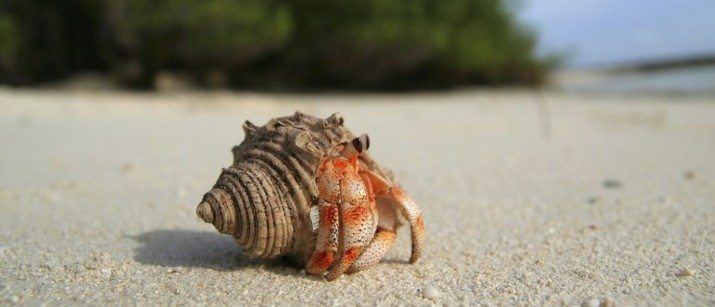 | ||
Lower classifications Coenobita, Coconut crab, Red king crab, Pagurus, King crab | ||
Hermit crabs are decapod crustaceans of the superfamily Paguroidea.
Contents
- Hermit crab house shopping
- Biological description
- Environment
- Shells and shell competition
- Development and reproduction
- Classification
- Fossil record
- References
Most of the approximately 1100 species possess an asymmetrical abdomen that is concealed in a scavenged gastropod shell carried around by the hermit crab.
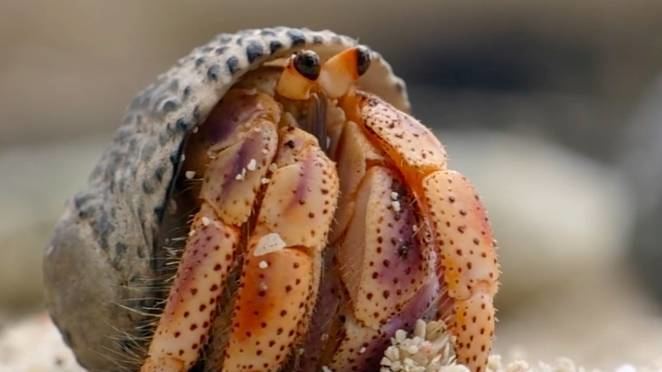
Hermit crab house shopping
Biological description
Most species have long, spirally curved abdomens, which are soft, unlike the hard, calcified abdomens seen in related crustaceans. The vulnerable abdomen is protected from predators by a salvaged empty seashell carried by the hermit crab, into which its whole body can retract. Most frequently, hermit crabs use the shells of sea snails (although the shells of bivalves and scaphopods and even hollow pieces of wood and stone are used by some species). The tip of the hermit crab's abdomen is adapted to clasp strongly onto the columella of the snail shell. Most hermit crabs are nocturnal.
Environment
Hermit crabs can be divided into two groups:
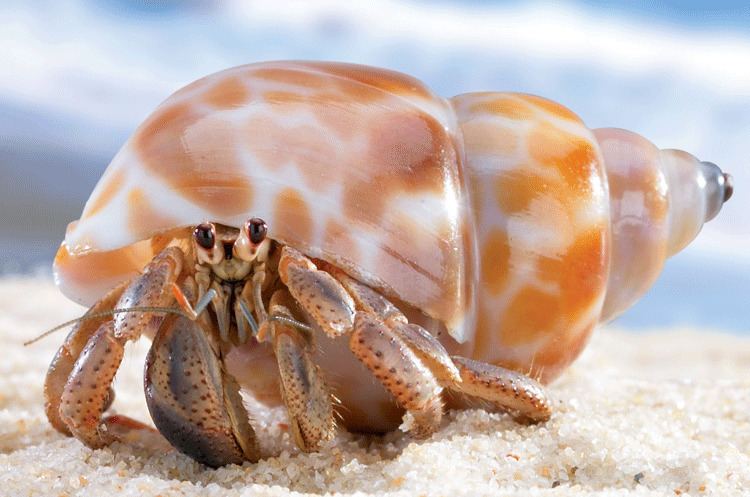
Shells and shell competition
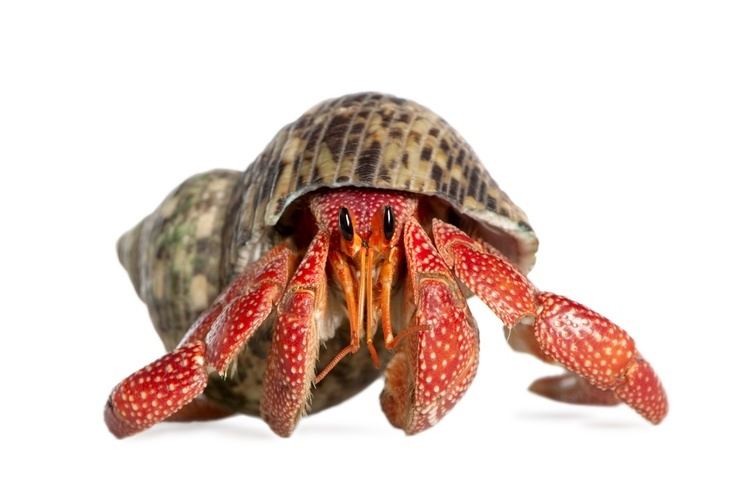
As hermit crabs grow, they require larger shells. Since suitable intact gastropod shells are sometimes a limited resource, vigorous competition often occurs among hermit crabs for shells. The availability of empty shells at any given place depends on the relative abundance of gastropods and hermit crabs, matched for size. An equally important issue is the population of organisms that prey upon gastropods and leave the shells intact. Hermit crabs kept together may fight or kill a competitor to gain access to the shell they favour. However, if the crabs vary significantly in size, the occurrence of fights over empty shells will decrease or remain nonexistent. Hermit crabs with too-small shells cannot grow as fast as those with well-fitting shells, and are more likely to be eaten if they cannot retract completely into the shell.
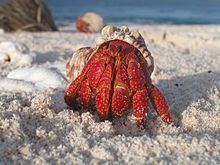
As the hermit crab grows in size, it must find a larger shell and abandon the previous one. This habit of living in a second-hand shell gives rise to the popular name "hermit crab", by analogy to a hermit who lives alone. Several hermit crab species, both terrestrial and marine, have been observed forming a vacancy chain to exchange shells. When an individual crab finds a new empty shell it will leave its own shell and inspect the vacant shell for size. If the shell is found to be too large, the crab goes back to its own shell and then waits by the vacant shell for anything up to 8 hours. As new crabs arrive they also inspect the shell and, if it is too big, wait with the others, forming a group of up to 20 individuals, holding onto each other in a line from the largest to the smallest crab. As soon as a crab arrives that is the right size for the vacant shell and claims it, leaving its old shell vacant, then all the crabs in the queue swiftly exchange shells in sequence, each one moving up to the next size. Hermit crabs often "gang up" on one of their species with what they perceive to be a better shell, and pry its shell away from it before competing for it until one takes it over.
For some larger marine species, supporting one or more sea anemones on the shell can scare away predators. The sea anemone benefits, because it is in position to consume fragments of the hermit crab's meals. Other very close symbiotic relationships are known from encrusting bryozoans and hermit crabs forming bryoliths.
Development and reproduction
Hermit crab species vary widely in size and shape. They range from species with a carapace just a few millimeters in length to the larger Coenobita brevimanus, which has a lifespan of 12 to 70 years and can grow to the size of a coconut. The Birgus latro, commonly known as the coconut crab, is notable for being the largest terrestrial invertebrate in the world and does not use a shell for protection.
The young develop in stages, with the first two (the nauplius and protozoea) occurring inside the egg. Most hermit crab larvae hatch at the third stage, the zoea. In this larval stage, the crab has several long spines, a long, narrow abdomen, and large fringed antennae. Several zoeal moults are followed by the final larval stage, the megalopa.
Classification
Hermit crabs are more closely related to squat lobsters and porcelain crabs than they are to true crabs (Brachyura). However, the relationship of king crabs to the rest of Paguroidea is a highly contentious topic. Many studies based on physical characteristics, genetic information, and combined data, support the longstanding hypothesis that the king crabs in the family Lithodidae are derived hermit crabs and should be classified as a family within Paguroidea. Other researchers have challenged this, asserting that the Lithodidae (king crabs) should be placed with the Hapalogastridae in a separate superfamily Lithodoidea. Six families are formally recognized in the superfamily Paguroidea, containing around 1100 species in total in 120 genera.
Fossil record
The fossil record of in situ hermit crabs using gastropod shells stretches back to the Late Cretaceous. Before that time, at least some hermit crabs used ammonites' shells instead, as shown by a specimen of Palaeopagurus vandenengeli from the Speeton Clay, Yorkshire, UK from the Lower Cretaceous.
Hermit crabs are often seen as a "throwaway pet" that would live only a few months, but species such as Coenobita clypeatus have a 23-year lifespan if properly treated, and some have lived longer than 32 years.
